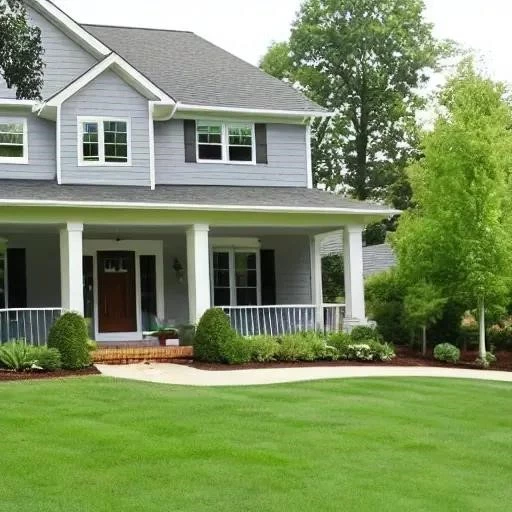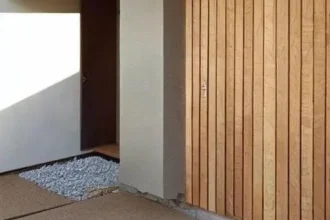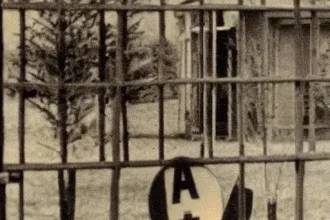Imagine pulling into your driveway, greeted not by a monotonous expanse of lawn, but by a vibrant tapestry of nature, a living testament to thoughtful design and lasting beauty. Your front yard is more than just an entry point; it’s a powerful statement, a silent ambassador for your home’s character and your personal aesthetic. In an era where curb appeal profoundly influences property value and daily well-being, the strategic selection of the right trees becomes an art form, a crucial investment in both your present enjoyment and future prosperity. This isn’t merely about planting something green; it’s about crafting an enduring masterpiece that evolves with the seasons, providing shade, solace, and undeniable charm.
For too long, the humble front yard has been underestimated, often relegated to a functional space rather than celebrated as a vibrant opportunity. Yet, by embracing the profound impact of well-chosen arboreal anchors, homeowners possess an incredible power to elevate their entire property. The journey to discovering the best trees in the front yard is an exciting exploration, blending horticultural science with personal vision. It promises not just aesthetic enhancement but also tangible benefits, from reducing energy costs by providing natural cooling to creating vital habitats for local wildlife, fostering a deeper connection with the natural world right outside your door. Let’s embark on this verdant quest, revealing the secrets to selecting trees that don’t just grow, but truly flourish.
Below is a quick reference guide to some of the most highly recommended and versatile tree species perfect for enhancing any front yard, offering a blend of beauty, utility, and resilience:
| Tree Species | Key Characteristics | Benefits for Front Yard | Considerations |
|---|---|---|---|
| Japanese Maple (Acer palmatum) | Stunning fall foliage (reds, oranges, purples), delicate branching, varied cultivars (dwarf to medium). | Exceptional ornamental appeal, year-round interest, excellent focal point, fits smaller spaces. | Prefers partial shade, well-drained soil, can be sensitive to strong winds or intense sun. |
| Flowering Dogwood (Cornus florida) | Iconic spring blooms (white, pink, red bracts), attractive layered branching, red berries, reddish-purple fall color. | Spectacular seasonal display, wildlife friendly, elegant form, adds sophisticated charm. | Requires well-drained, acidic soil; susceptible to some diseases (e.g., anthracnose) in certain climates. |
| Serviceberry (Amelanchier canadensis) | Early spring white flowers, edible berries (attracts birds), brilliant orange-red fall foliage, smooth gray bark. | Multi-season interest, compact size, native to many regions, low maintenance, excellent for small yards. | Needs adequate moisture, tolerates various light conditions from full sun to partial shade. |
| Dwarf Conifers (e.g., Dwarf Alberta Spruce) | Evergreen, compact, varied textures and forms (conical, globe), provides year-round structure. | Constant green appeal, excellent for formal or contemporary designs, low maintenance, good in containers. | Slow growth, can be prone to spider mites in hot, dry conditions; ensure good air circulation. |
| Redbud (Cercis canadensis) | Vibrant magenta-pink flowers directly on branches in early spring, heart-shaped leaves, unique form. | Dramatic early spring color, unique visual texture, relatively small to medium size, adaptable. | Prefers well-drained soil, can be short-lived (20-30 years), generally disease resistant. |
For more detailed information on tree selection and care, consult reputable horticultural resources such as The Arbor Day Foundation.
The Art and Science of Selection: Beyond Mere Aesthetics
Choosing the right front yard tree is not a decision to be taken lightly; it’s a profound commitment to your landscape’s future, a remarkably effective way to boost both curb appeal and property value. Leading landscape architects consistently emphasize that the ideal tree seamlessly integrates with your home’s architectural style, the local climate, and the specific characteristics of your soil. This involves a meticulous consideration of mature height and spread, ensuring that your chosen specimen won’t overwhelm your home or neighboring properties, nor interfere with utility lines or underground infrastructure. For instance, a towering oak, magnificent in its grandeur, might be completely unsuitable for a small urban plot, where a more compact Japanese Maple or a multi-stemmed Serviceberry would truly thrive, creating a stunning visual without the spatial dominance.
Beyond size, consider the tree’s contribution through all four seasons. Will it offer breathtaking spring blossoms, provide cooling summer shade, display brilliant autumn foliage, or maintain structural interest during the starkness of winter? A Flowering Dogwood, for example, delivers a spectacular show of white or pink bracts in spring, followed by attractive red berries that sustain local birdlife, culminating in rich, reddish-purple fall color. This multi-season appeal is incredibly valuable, transforming your yard into a dynamic, ever-changing tableau. Moreover, evaluating a tree’s disease resistance and maintenance requirements is paramount. Opting for species known for their resilience in your hardiness zone can save countless hours of care and prevent costly interventions down the line, ensuring your investment remains vibrant and healthy for decades.
Expert Insights: Cultivating a Thriving Microclimate
Industry experts universally agree that understanding your specific site conditions is the bedrock of successful tree planting. “It’s not just about what tree you love, but what tree loves your yard,” often quips Dr. Eleanor Vance, a renowned urban arborist and advocate for sustainable landscaping. By integrating insights from local nurseries and university extension offices, homeowners can accurately assess soil pH, drainage, and sun exposure—critical factors determining a tree’s long-term vitality. For instance, many popular ornamentals, such as the Redbud, flourish in well-drained soil but will struggle in consistently waterlogged conditions, making proper site preparation an indispensable first step.
Furthermore, the concept of “right tree, right place” extends to the often-overlooked benefits trees provide. Strategically placed deciduous trees on the south and west sides of your home can dramatically reduce summer cooling costs by blocking direct sunlight, effectively creating a natural air conditioning system. Conversely, evergreens planted as windbreaks on the north side can mitigate winter winds, leading to significant heating savings. This thoughtful placement transforms trees from mere decorative elements into incredibly effective, living climate control systems, embodying a forward-looking approach to home ownership. Investing in quality stock from reputable growers, ensuring proper planting techniques—like avoiding planting too deeply—and providing adequate initial watering are foundational steps that guarantee your chosen tree will establish a robust root system, primed for enduring growth.
A Vision for Tomorrow: The Enduring Legacy of Thoughtful Planting
The journey of planting the best trees in the front yard is more than a garden project; it’s an act of optimistic foresight, a contribution to your community’s ecological tapestry, and a profound investment in your property’s future. Each tree, standing tall and proud, represents a living legacy, enhancing the air we breathe, supporting biodiversity, and enriching the very fabric of our neighborhoods. As these majestic sentinels mature, they become silent storytellers, witnessing countless seasons and evolving alongside your family, adding character, value, and an undeniable sense of permanence to your home.
So, as you envision your ideal front yard, consider the profound impact of each choice. Will you opt for the delicate grace of a Japanese Maple, the vibrant spring symphony of a Flowering Dogwood, or the steadfast elegance of a Dwarf Conifer? Whatever your preference, remember that with careful planning and a touch of horticultural wisdom, you are not just planting a tree; you are cultivating a future, nurturing beauty, and ultimately enhancing your quality of life for years, even generations, to come. Embrace this opportunity to transform your outdoor space into a sanctuary of natural splendor, a testament to the enduring power of nature’s finest offerings.






